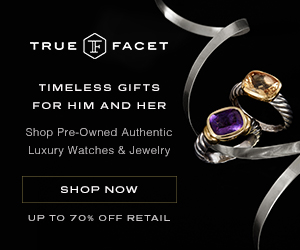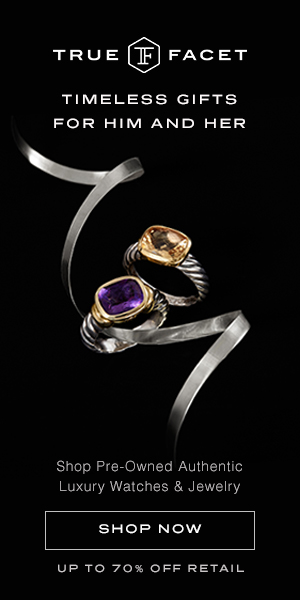Diamond Shopping Checklist: 4 Things to Ask Your Jeweler
Before you invest in piece of diamond jewelry, you want to glean a little extra information from your jeweler so you know that you are getting the best value for your dollar. Here are four essential questions (and what to look for in the answers) when shopping for loose diamonds or diamond jewels.
MUST-ASK QUESTIONS WHEN SHOPPING FOR LOOSE DIAMONDS OR A DIAMOND ENGAGEMENT RING
Q1. Is the loose (unset) diamond or the mounted (set) diamond certified by a reputable independent lab?
A1. In most cases, unless the stone is set in a vintage mounting and is from an era when labs either did not exist or were not used as often, diamonds will be accompanied by an independent certification. The most reputable grading labs in the United States that issue diamond certifications are the Gemological Institute of America (GIA), or the American Gem Society Laboratory (AGSL). These are two of the strictest labs in existence and their certifications will inform the buyer of the diamond’s carat weight and shape as well as its color, clarity, measurements, polish, symmetry, and sometimes (in the case of a modern round brilliant cut), cut grade. If, for some reason, the diamond is not accompanied by a certification from one of these two labs but you’re still interested in purchasing it, see if the seller is willing to allow you a reasonable “full-money-back” return policy so that you have time to take the diamond to be independently graded by an appraiser.
Q2. With all the diamond simulants in existence right now, how do I know if this diamond is real?
A2. Every seller – whether they are an online store or a brick-and-mortar shop – should allow the buyer a reasonable time frame in order to have their purchase independently appraised. Appraisers will be able to “test” the diamonds using electronic testers but also be able to view the diamond microscopically in order to determine whether or not it is a natural stone or a diamond simulant. If the seller does not offer some sort of return policy or questions why you want to take the diamond to be appraised, then take your business elsewhere, as that is a huge red flag.
MUST-ASK QUESTIONS WHEN SHOPPING FOR DIAMOND JEWELRY OR PIECES THAT CONTAIN SMALLER, CLUSTERS OF DIAMONDS
Q3. What is the approximate color and clarity of the diamonds in the piece?
A3. Since small (often under .20 carats) diamonds – known in the jewelry world as “melee” – are rarely independently graded by the diamond labs listed above, you are permitted to ask what the approximate color and clarity grades are for the stones as a whole. You also want to make sure that, if there are several diamonds in the piece, the colors of those stones match one another. Most of the time, the naked eye cannot pick up a color difference of up to two grades on small diamonds, but if there is a distinct variation in the color from one diamond to the next (and the piece is not designed to be that way) then you probably want to find a different bauble that suits your style.
Q4. Are the diamonds in this piece natural diamonds (mined from the Earth) or man-made diamonds (grown in a lab)?
A4. Fifteen years ago, this was not a question that would have been asked, but with the growing popularity of man-made diamonds (particularly with millennials) as a result of the stigma sometimes associated with mined diamonds, this question is now a relevant one and not one that you should feel odd about asking.
To be clear, either answer is a good one, but whether or not you buy the piece based on that answer will come down to what your personal preference is. Both are actual diamonds, and you should be aware of that. Both have the exact same metabolic make-up. Diamonds grown in a lab are not fake, and diamonds that have taken millions of years to form in the Earth are not always “blood” diamonds. If you do your research on both, you will be able to make an educated decision as to which type of diamond is the right one for you.







